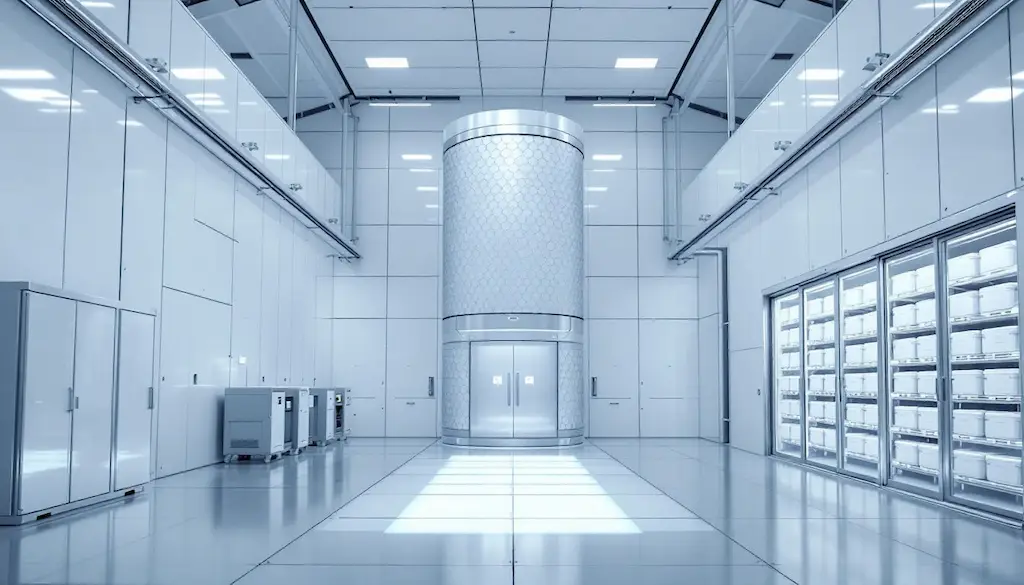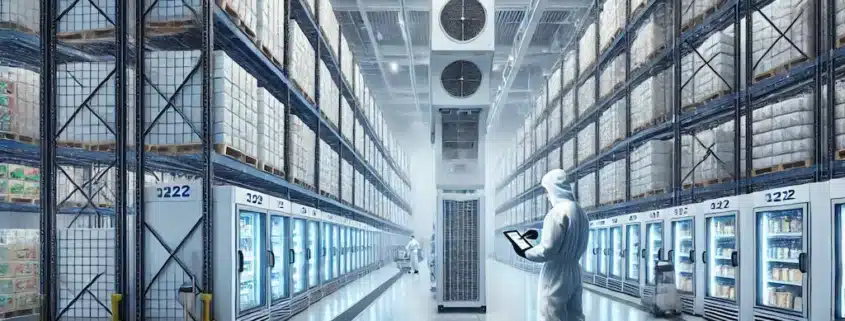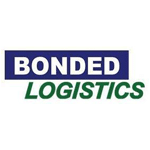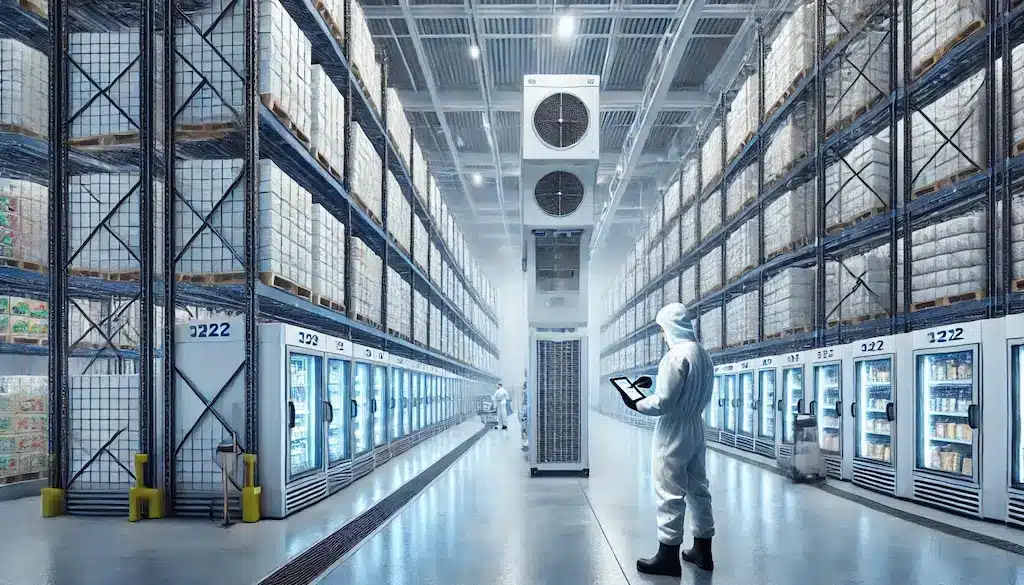Best Practices for Optimizing Cold Storage Facilities
Cold storage is vital for keeping products like food and medicine safe and usable. In this guide, you’ll learn about optimizing cold storage facilities, types of cold storage, essential industry practices, and the latest trends impacting the field.
Key Takeaways
- Cold storage is essential for preserving the quality of temperature-sensitive goods like food and pharmaceuticals, playing a crucial role in preventing spoilage and ensuring safety.
- Effective cold storage operations rely on advanced temperature control systems, real-time monitoring, and robust inventory management to maintain product integrity and minimize waste.
- Technological innovations, including automation and IoT, are transforming cold storage facilities, enhancing efficiency, safety, and compliance with evolving consumer demands.
Understanding Cold Storage Warehousing
Cold storage warehousing preserves product quality and extends shelf life by storing temperature-sensitive goods at specific temperatures. This is essential for products like food, pharmaceuticals, and artwork that require stable environments to prevent spoilage and degradation. It ensures products reach their destination in perfect condition, making it an indispensable part of the cold chain industry. Additionally, cold storage plays a crucial role in maintaining the integrity of these products.
Two main types of cold storage warehouses include refrigerated cold storage facilities, which keep products cool but not frozen, and frozen storage, which maintains temperatures below 32°F. These facilities use insulation and HVAC cooling systems to maintain cooler temperatures, preserving the integrity of stored goods. Cold storage warehousing involves a vital role in slowing down physical and chemical changes, preserving purity, and inhibiting decay in temperature-sensitive products.
Cold storage goes beyond preservation by enabling year-round availability of seasonal food products and facilitating the aging process of items like cheese and meats, enhancing their taste and longevity. In essence, cold storage is not just about keeping things cold; it’s about maintaining the quality and safety of products that are integral to our daily lives.
Key Industries Utilizing Cold Storage Facilities
Various industries rely on cold storage facilities to maintain the integrity of their products. Key sectors include agriculture, food processing, pharmaceuticals, and retail. For instance, the pharmaceutical industry depends on cold storage warehousing to ensure that medicines and vaccines remain effective until they reach the end-users in the cold storage industry.
The food processing industry depends on cold storage to minimize waste and extend the shelf life of perishable items. Without these facilities, up to 40% of the food supply could go to waste, underscoring the critical role of cold storage in reducing food waste.
The rising consumer preference for fresh, organic foods and the growth of e-commerce have increased the demand for temperature-sensitive products, making cold storage a crucial component of the modern supply chain.
Types of Cold Storage Warehouses
Cold storage warehouses vary in types, designed to meet specific needs based on ownership, temperature settings, and intended use.
Private Cold Storage Facilities
Private cold storage facilities, owned by the companies producing the goods, are often located adjacent to manufacturing sites. These warehouses offer greater control and flexibility, streamlining operations and improving supply chain management. Large corporations like Nestle and Kraft commonly utilize private cold storage to manage their supply chains more effectively.
Public Cold Storage Warehouses
Conversely, public cold storage warehouses are managed by third-party logistics providers, offering storage and additional services for multiple clients. These facilities are available for short-term or long-term rental, allowing businesses to use space flexibly without the significant investment required for private cold storage. The popularity of public cold storage facilities in the U.S. underscores the high costs and complexity of owning and operating such facilities.
Refrigerated Warehouses
Refrigerated warehouses typically maintain temperatures between 33° to 55°F, suitable for products that need to stay cool but not frozen. These facilities are essential for preserving goods that require cooler temperatures but not the extreme cold of frozen storage.
Blast Freezing and Ultra-low Temp Facilities
Blast freezing facilities use intense cold air to quickly lower product temperatures from 160° to 41°F, preserving the freshness of perishable items. Ultra-low temperature warehouses are specialized for storing sensitive biological materials at extremely low temperatures, typically between -4° to -122.8°F, maintaining the integrity of these critical products.
Critical Components of Effective Cold Storage Operations

Effective cold storage operations rely on critical components designed to maintain specific temperature ranges and the integrity and quality of stored goods. Advanced temperature control systems are vital, ensuring perishable items remain within specific temperature ranges to prevent spoilage. Real-time monitoring systems allow immediate responses to temperature deviations, crucial for product safety in cold chain operations and cold chain management.
Humidity and air quality control systems protect the integrity of stored products. Proper air circulation prevents moisture buildup and controls mold growth, while heavy-duty insulation minimizes heat transfer, ensuring stable internal temperatures.
Backup systems, including generators, mitigate risks from power disruptions, ensuring uninterrupted temperature control even during power failures. These components collectively form the backbone of effective backup power systems and cold storage warehousing, ensuring temperature-sensitive goods are stored in optimal conditions.
Choosing the Right Cold Storage Warehouse for Your Needs
Selecting the right cold storage warehouse requires considering several factors. First, verify that the warehouse has systems capable of maintaining specific temperature requirements for different products. Certifications such as HACCP and FSMA are essential indicators of a warehouse’s commitment to maintaining high standards for food safety.
Location is another key factor. Proximity to production areas and end-users can significantly influence distribution times and expenses, minimizing temperature deviations and reducing fuel consumption. Being close to transportation facilities can further reduce delays and associated costs, ensuring timely deliveries.
Storage capacity is crucial; evaluating a warehouse’s ability to handle incoming goods and cope with demand fluctuations is necessary for efficient operations. Value-added services like palletizing, kitting, labeling, shrinking, and wrapping can also greatly enhance operational efficiency.
While choosing the cheapest option may save money initially, it could lead to higher costs if service quality suffers. Working with a reputable cold storage expert can help avoid costly mistakes related to facility design and temperature control. Strong and responsive communication in a cold storage partnership is vital to prevent minor issues from escalating.
Challenges in Cold Storage Environments
Cold storage environments present unique challenges that require careful management. Here are some key considerations:
- Maintaining appropriate temperature and humidity levels is essential, as fluctuations can lead to product spoilage and quality degradation.
- Controlling temperature in large areas can be particularly challenging compared to smaller spaces.
- High energy consumption is another significant challenge, as cold storage facilities operate continuously, driving up operational costs.
Operational disruptions, high labor costs, and stringent regulatory compliance further complicate cold storage operations. Compliance requires meticulous documentation and consistent record-keeping, adding to the operational burden.
Employee safety is a major concern, with workers susceptible to cold-related health issues and accidents. Addressing these challenges is essential for maintaining the efficiency and safety of cold storage environments.
Best Practices for Managing Cold Storage Facilities
Implementing best practices is crucial for managing cold storage facilities effectively.
- Robust inventory management minimizes waste and ensures product quality.
- Real-time inventory tracking systems enhance operational efficiency by reducing stockouts or overstocking and ensuring proper product rotation.
- Automation improves efficiency and accuracy, reducing human error and speeding up processes within cold storage operations.
- Emergency response protocols are essential to address potential disruptions in cold storage operations.
These protocols can minimize the impact of operational disruptions, ensuring temperature-sensitive goods remain in optimal condition. Adopting these best practices helps cold storage facilities maintain high standards of efficiency and product integrity.
Technological Innovations in Cold Storage Warehousing

Technological innovations are transforming cold storage warehousing, enhancing efficiency and product safety. Robotic automation helps address operational challenges and improve efficiency. Automated guided vehicles (AGVs) and autonomous mobile robots designed for cold environments facilitate the movement of goods, ensuring timely deliveries and reducing human error.
Advancements in IoT and AI enhance real-time monitoring and efficiency in cold storage operations. These technologies enable precise tracking of product location and conditions, ensuring compliance and accurate inventory management.
High-density storage systems maximize space use by allowing vertical storage, further optimizing cold storage environments. Cutting-edge technology equips cold storage facilities to maintain product quality and meet modern supply chain demands.
Safety Tips for Working in Cold Storage
Safety is paramount in cold storage environments due to unique risks faced by employees. Here are some tips:
- Workers should wear insulated clothing, thermal gloves that allow dexterity, and cold weather boots with breathable designs.
- Non-moisture-absorbing socks, such as polypropylene, help prevent cold-related injuries.
- Regular breaks are necessary; workers should take a 10-minute break every hour to mitigate the risks of exhaustion and cold exposure.
- Proper training on equipment use and emergency protocols ensures safety standards are followed.
- Maintaining proper airflow prevents ice buildup and ensures safe breathing conditions.
- Regular inspections help identify potential hazards, adhere to safety standards, and ensure a safe working environment.
Following these safety tips helps cold storage facilities protect their workforce and maintain efficient operations.
The Role of Cold Storage in the Cold Chain Industry

Cold storage ensures the quality and safety of various commodities, including food, pharmaceuticals, and chemicals, playing a critical role in the cold chain industry. Cold storage warehouses keep perishable goods in optimal condition until delivery, preventing food waste and supporting medical advancements. Effective inventory management, transportation logistics, supplier coordination, and regulatory compliance are crucial for cold storage operations.
Accurate inventory management involves tracking inventory, checking expiration dates, and rotating stock to minimize waste. Coordination between suppliers and retailers is necessary to plan delivery schedules and predict demand.
Cold storage warehouses must comply with strict food safety and handling regulations, adhering to guidelines from bodies like the FDA and GMP. The rise in direct-to-consumer sales models has increased the demand for efficient cold storage solutions.
Cost Considerations in Cold Storage
Cost considerations are crucial in managing cold storage facilities. Constructing a cold storage facility can easily cost millions, influenced by various factors. Location is critical, with variations in land prices, utility costs, and local labor availability affecting the overall cost. Cold storage construction is about three times more expensive than conventional warehouses, costing between $250 and $350 per square foot.
Investing in quality cold storage equipment may have higher initial costs but reduces maintenance expenses over time. Using technology, such as automated systems, can increase upfront costs but enhances operational efficiency, resulting in long-term savings.
Regular maintenance of equipment is essential to avoid operational disruptions and unexpected repair costs. Transparent pricing models and understanding cold storage costs are essential for effective budgeting.
Partnering with a Cold Storage Warehousing Expert
Partnering with a cold storage warehousing expert can reduce costs and enhance operational efficiencies. A reliable cold storage warehousing partner optimizes supply chain operations, avoiding significant investments in dedicated facilities. When choosing a partner, evaluating their expertise and reputation is crucial. Their commitment to fulfilling your specific needs should also be considered. Clear and detailed cost estimates are essential for a successful partnership.
Access to advanced technology and infrastructure is a key benefit of partnering with an expert, significantly enhancing operational efficiencies. Strategic partnerships improve compliance with regulatory requirements, reducing the risk of penalties.
Businesses should also prioritize sustainability, adopting eco-friendly packaging and energy-efficient practices.
Trends Shaping the Future of Cold Storage
The future of cold storage is being shaped by several key trends, focusing on temperature control, automation, and sustainability. Innovations in these areas are crucial for businesses to maintain the integrity and safety of temperature-sensitive products. The cold storage market is expected to grow at a CAGR of 9.2% from 2022 to 2030, driven by increasing demand for refrigerated storage. This growth is fueled by trends such as freshly prepared kitted meals, which require efficient and reliable cold storage solutions.
Businesses must stay informed about these trends to remain competitive and meet evolving consumer preferences. Automation and advanced technologies like IoT and AI will continue to enhance cold storage operations, while sustainability initiatives will become increasingly important.
By embracing these trends, cold storage facilities can improve efficiency, reduce costs, and ensure the safety and quality of stored goods through cold storage services.
How Cadre Technologies Supports Cold Storage Optimization
Managing a cold storage facility requires precision, efficiency, and advanced technology to maintain optimal conditions for perishable goods. Cadre Technologies offers cold storage warehouse management software designed to enhance operational efficiency, ensure compliance, and improve inventory accuracy in temperature-controlled environments.
Comprehensive WMS for Cold Storage
Cadre Technologies provides a robust warehouse management system (WMS) tailored for the unique challenges of cold storage logistics. Whether you’re managing a refrigerated warehouse, a frozen storage facility, or a multi-temperature environment, Cadre’s WMS helps businesses:
- Maintain Compliance & Traceability – Cadre’s software supports FDA, FSMA, and HACCP compliance by tracking lot numbers, expiration dates, and temperature conditions to ensure food safety and regulatory adherence.
- Enhance Inventory Visibility – Real-time tracking capabilities help cold storage operators reduce waste, optimize space, and manage stock rotation efficiently to prevent spoilage.
- Optimize Labor & Workflows – Automated workflows, directed putaway, and efficient picking strategies ensure faster order fulfillment while reducing unnecessary movement in temperature-sensitive zones.
- Seamless Integration with Cold Storage Systems – Cadre’s solutions integrate with temperature sensors, automated storage systems, and ERP platforms, allowing businesses to monitor conditions in real time and automate critical workflows.
Streamlining Cold Storage Distribution
Cold storage facilities play a critical role in modern supply chains, ensuring food, pharmaceuticals, and other temperature-sensitive goods reach their destinations without compromising quality. Cadre Technologies supports third-party logistics (3PL) providers and direct cold storage operators by offering multi-client, multi-location support, allowing businesses to efficiently manage multiple customers and inventory profiles within a single system.
By leveraging Cadre’s cold storage WMS, businesses can improve compliance, efficiency, and overall warehouse productivity, ensuring products remain safe and meet industry standards.
Summary
Cold storage warehousing plays a critical role in the cold chain industry, preserving the quality and safety of temperature-sensitive products like food and pharmaceuticals. This guide has explored the fundamentals of cold storage optimization, key best practices, and the latest technological advancements shaping the industry.
To maximize efficiency, businesses should focus on precise inventory management, automation, and regulatory compliance while addressing common cold storage challenges. Partnering with a trusted cold storage expert and staying ahead of industry trends will help businesses improve product integrity, reduce waste, and enhance overall operational efficiency in this ever-evolving sector.
Take Your Cold Storage Operations to the Next Level
Optimizing cold storage facilities requires the right balance of precision, compliance, and efficiency. With Cadre Technologies’ Cold Storage WMS, you can streamline operations, ensure regulatory compliance, and maintain the integrity of temperature-sensitive products with confidence.
Ready to enhance your cold storage management? Request a demo today and discover how Cadre Technologies can help you optimize your warehouse for peak efficiency.
Frequently Asked Questions
What is cold storage?
Cold storage is a temperature-controlled storage facility designed to preserve perishable goods, such as dairy, proteins, and fresh produce, thereby extending their shelf life. This method is essential for maintaining the quality and safety of these products.
How much does a cold storage room cost?
A cold storage room typically costs between $250 to $350 per square foot, making it significantly more expensive than a traditional warehouse. This investment reflects the specialized requirements for temperature control and insulation.
What are the concepts of cold storage?
Cold storage refers to the system of maintaining specific temperature ranges for perishable goods, such as food and medicines, to ensure their integrity and extend shelf-life. This practice is crucial for preserving the quality of sensitive items.
What are the key components of effective cold storage operations?
Key components of effective cold storage operations include advanced temperature control systems, real-time monitoring, humidity and air quality control, heavy-duty insulation, and reliable backup power systems. Implementing these elements is critical for maintaining product quality and safety.
Which industries rely most on cold storage facilities?
The industries that rely most on cold storage facilities are agriculture, food processing, pharmaceuticals, and retail, as they require these solutions to preserve product quality and minimize waste.









